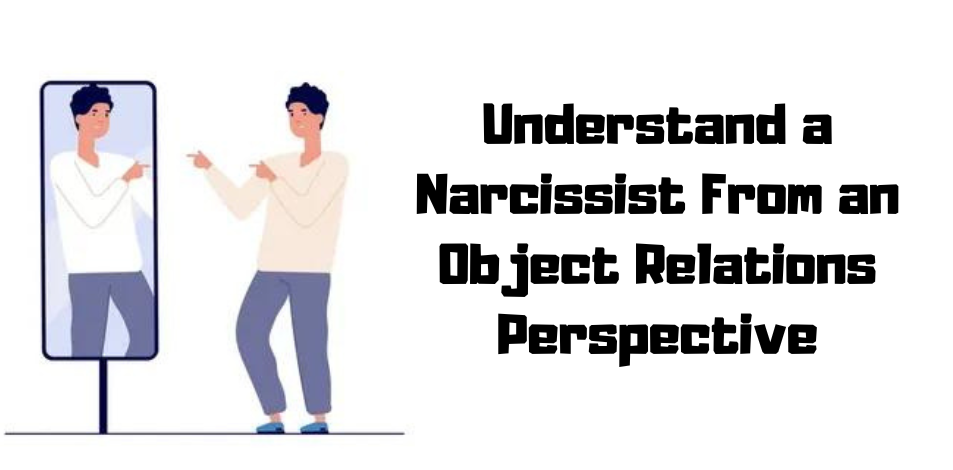
Key Points
A narcissist may treat loved ones as objects by denying them the right to have feelings that are different from their own.
A narcissist may use two unconscious defense mechanisms, idealization, and devaluation, to treat loved ones as either good or bad objects.
By treating their loved ones as good or bad objects, narcissists can play one against the other to manipulate and control.
A person can move from idealization to devaluation in the eyes of the narcissist instantly depending on how they please the narcissist.
Applying knowledge from Melanie Klein’s object relations theory can be helpful when dealing with a narcissist. A person with strong narcissistic tendencies often treats those closest to them as objects rather than as human beings. The narcissist focuses primarily on his or her feelings, so he or she often neglects to consider the feelings of others. This self-centered perspective prevents the narcissist from responding to feelings that are different from his or her own. Denying a person’s feelings in the context of a personal relationship is one way narcissists dehumanize their loved ones.
Related : Why a Narcissist May Forget Your Name
A narcissist’s lack of empathy is most apparent in relationships that are supposed to be close and least apparent in relationships with acquaintances. Often driven to enhance their public image, a narcissist easily empathizes with strangers. Feeling sorry for someone puts the narcissist in a position of power and allows them the opportunity to be the “hero.” Authentic empathy, on the other hand, requires narcissists to put themselves on a “level playing field” with their loved one to treat that person as an equal human being—someone who is entitled to their feelings. Unfortunately, the narcissist may be too insecure to achieve this. Manipulation and control are typically the two ways narcissists inappropriately take power in a relationship.
Idealization vs. Devaluation
There are two unconscious defense mechanisms, idealization, and devaluation, that help narcissists gain unscrupulous control in a personal relationship. The ideal or “good” person is the person the narcissist places on a pedestal. According to the narcissist, this person can do no wrong. The devalued person, on the other hand, is the person the narcissist sees as the problem. The devalued or “bad” person who is constantly berated, blamed, excluded, and ignored is the narcissist’s scapegoat for anything and everything that goes wrong in their life.
Typically, many people in the narcissist’s inner circle start as ideal objects. Their appeal is how the narcissist “attracts” them. It also immediately paves the way for his or her ability to manipulate.
The tricky part about the narcissist’s array of good and bad objects is that they are constantly being traded by the narcissist to maintain control. For example, an ideal object remains a good object as long as it satisfies the narcissist’s ego. If the narcissist is unhappy with this person, the narcissist immediately turns to idealizing the unappreciated individual. As the original ideal object “falls away,” intense panic about emotional abandonment may arise. To avoid rejection and replacement, the “good target” may be tempted to make an immediate personal sacrifice to please the narcissist and prove his or her loyalty. This provides the narcissist with an extraordinary amount of control in the relationship.
On the other hand, the shattered target longs to be cherished by the narcissist again. The broken target, devastated by the abuse, may do everything he can to regain the lost status and avoid future abandonment and rejection. He longs to be “loved” again.
This three-person comedy that the narcissist drives is often referred to as triangulation. The narcissist aligns himself with one person against the third. The excluded person often cries out for acceptance again and the person aligned with the narcissist fights to remain in the privileged position. Regardless, the narcissist keeps two people under his emotional control.
In addition, a person can go from good to bad in the eyes of the narcissist in an instant. For example, Lisa is worried about upsetting her friend Rachel, who can be moody. Lisa is afraid that Rachel will exclude her from her friends because Rachel seems to control the group, so Lisa goes out of her way to give her a research paper. Rachel accepts her invitation and gets an A+ on the assignment. She is thrilled and invites Lisa to a private party with her. At the event, Rachel’s ex-boyfriend says “hi” to Lisa. Rachel gets angry and accuses Lisa of flirting with her ex. The next day at school, Rachel refuses to talk to Lisa and teams up with their mutual friends against her. In this scenario, Lisa goes from an idealized object to an object of low value in Rachel’s perception. When engaging in triangulation, it can be difficult to decipher. To accurately perceive the dynamic, it may be necessary to gain some distance from the narcissist. Gaining distance may help a person gain perspective because they are less susceptible to active manipulation. Although a narcissist may resort to charm because they sense someone is pulling away, a person may try to detach a little to gain perspective and power.




